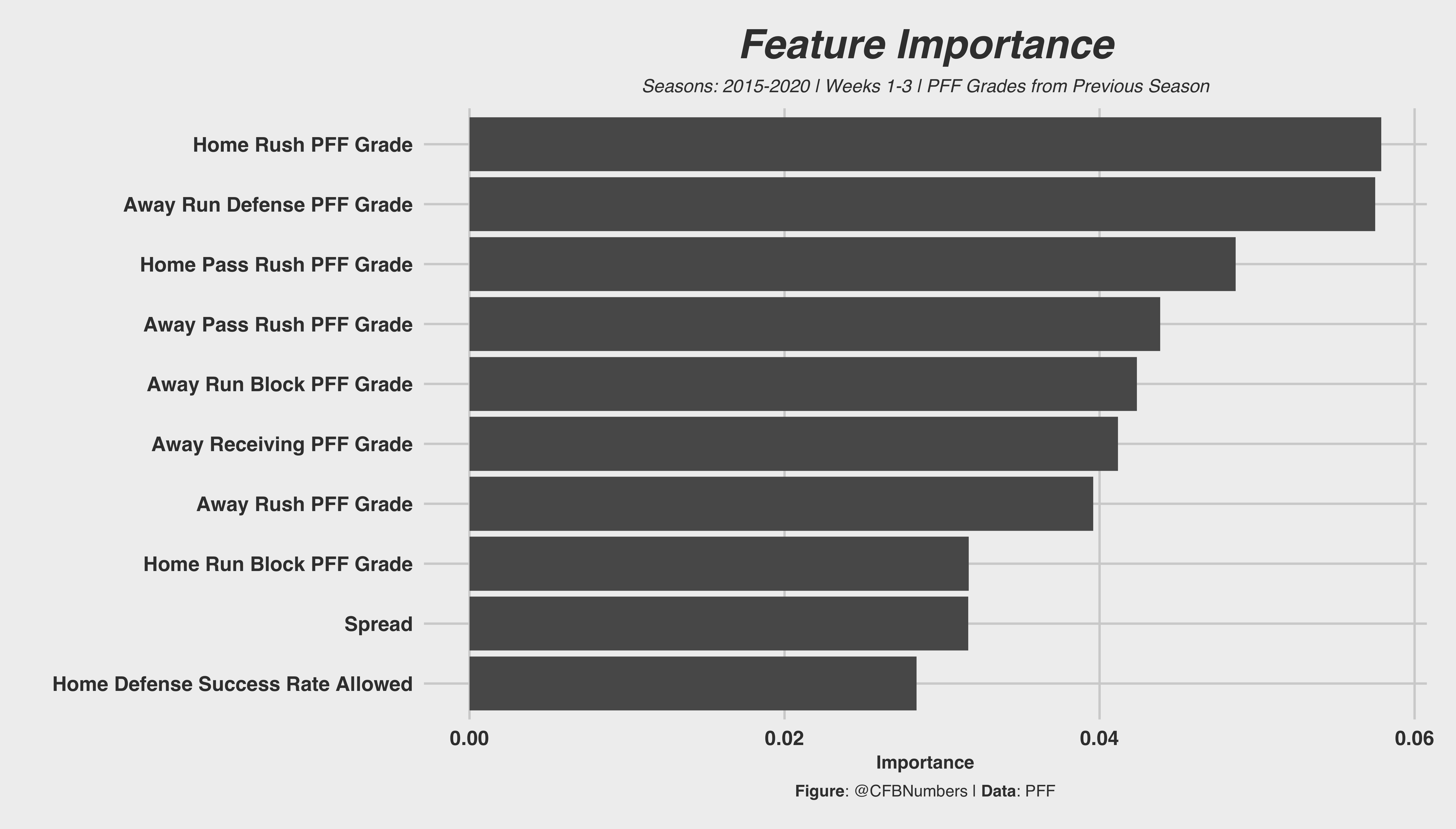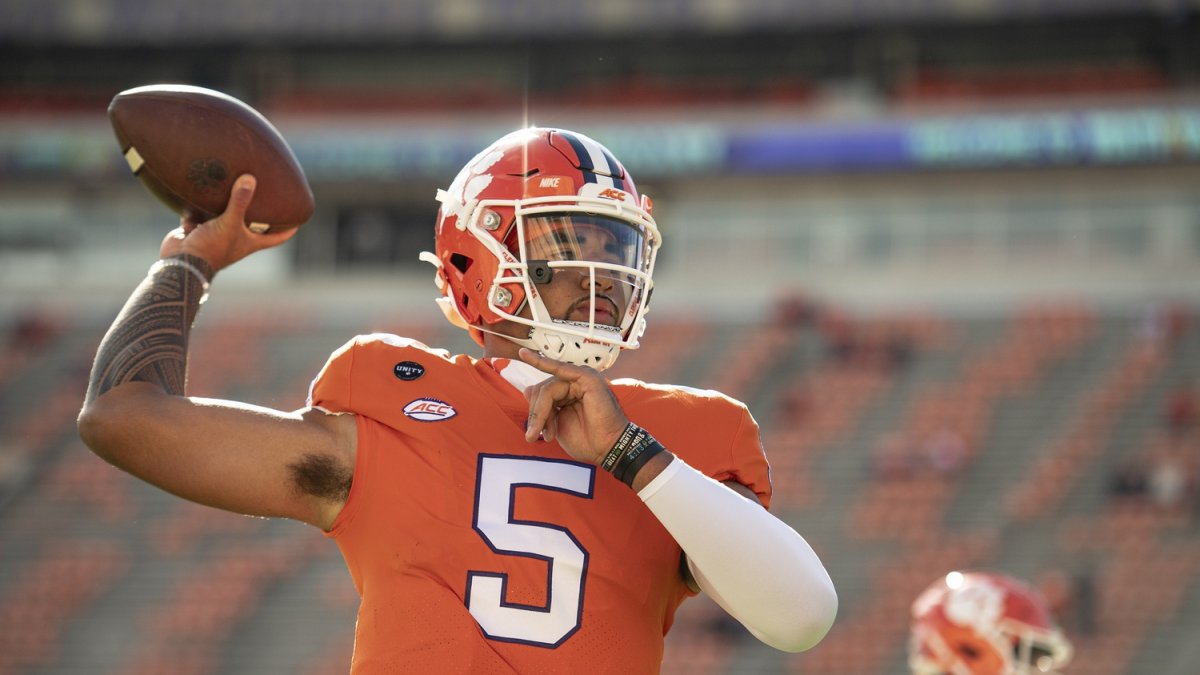The first month of the college football season can prove to be a difficult time for placing bets. Uncertainty with college football teams replacing a lot of talent from the previous year, extreme mismatches leading to massive spreads and lack of current data on teams can lead to frustrations at the betting window. Some bettors don’t even bother running their projections until they have a couple of weeks' worth of data at their disposal.
To best prepare for the upcoming season, PFF can examine the most important data points when it comes to predicting the probability of a team covering the spread. Using PFF grades on both the offensive and defensive side of the ball, along with returning production numbers, we can create a model and train it with games occurring in the first three weeks of the college football season to determine the most important variables for bettors to focus on.

Simply put, the running game is the key to mastering the early-game spreads. This aligns with the conventional wisdom that running the ball when you’re leading is the best way to preserve that lead.
In those wild mismatch games (FBS vs. FCS), a team proficient at running the ball can run up the score and potentially hit some of those higher spread numbers. This is especially true if the trailing team has a poor run defense and can’t stop a team from running out the clock.
The model also determined that teams have a better chance of covering the spread if they can effectively get to the quarterback. Stopping a team from passing their way back into a football game only increases the chances of a large point differential at the end of the game.
Exclusive content for premium subscribers

WANT TO KEEP READING?
Dominate Fantasy Football & Betting with AI-Powered Data & Tools Trusted By All 32 Teams
Already have a subscription? Log in


 © 2025 PFF - all rights reserved.
© 2025 PFF - all rights reserved.